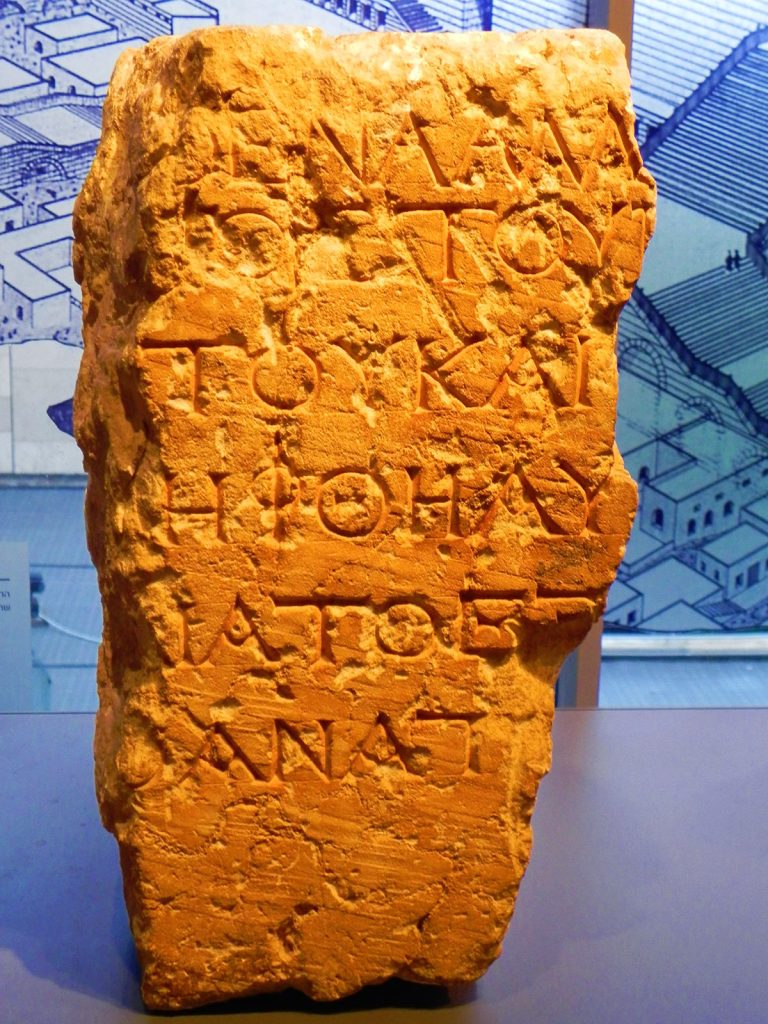This post is all about the Archaeology of Biblical Jerusalem. As a private tour guide of Jerusalem, it is one of my favorite subjects to tour. This truly a fascinating subject and I hope this post would be a nice introduction.
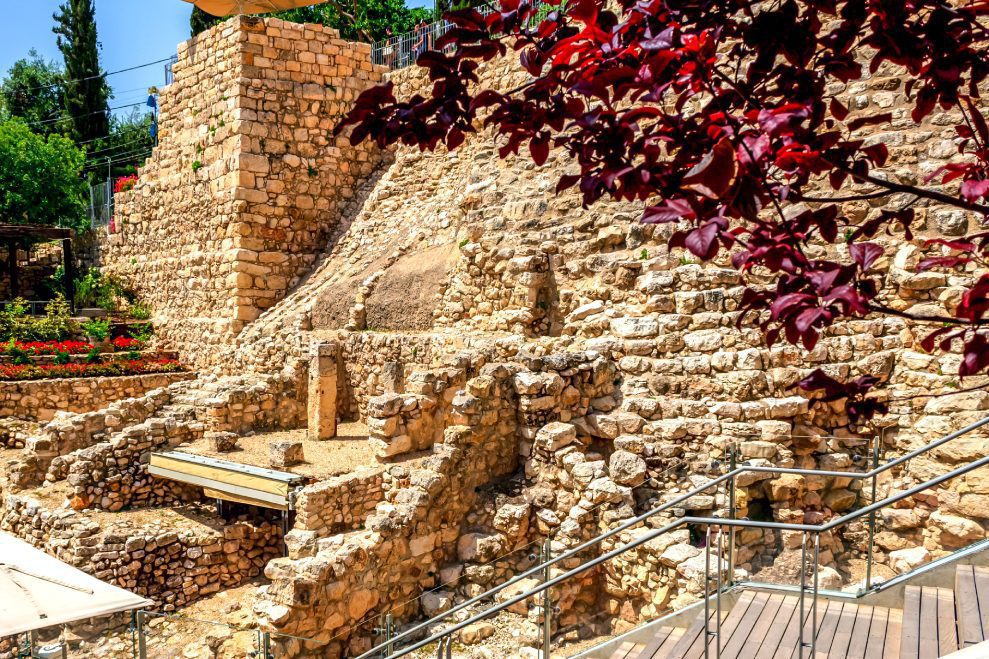
Archaeology of Biblical Jerusalem: The City of David
The first archaeological excavation at the City of David took place in the year 1867. Charles Warren entered through the Gihon Spring; then continued to crawl through Hezekiah’s Tunnel. There he discovered a shaft that rises to the upper tunnel; the Ancient water system that has been called the “Warren’s Shaft System” ever since.
However, recent excavations by the Israeli archaeologists Ronny Reich and Eli Shukron were able to prove that his interpretation has been wrong. As the shaft is not man-made and had not yet been discovered by Jerusalem’s inhabitants in the 10th century BCE. During our private tour of the City of David, we will get to know the different water systems built in different periods.
Area G: The Governmental Area of Biblical Jerusalem
Nothing survives of Solomon’s Temple (the first temple), although the remains of scattered and fragmentary walls between the Temple Mt. and City of David (the ophel) might be associated with Solomon’s palace complex. More substantial remains of the Bronze Age and Iron Age have been discovered around the City of David.
The first excavations in this area were conducted between the years 1923 till 1925. By two archaeologists, Robert Alexander Stewart Macalister and J. Garrow Duncan; on behalf of the Palestine Exploration Fund; a British Organization. Macalister and Duncan opened a trench at the crest of the hill above the Gihon Spring. Which is a natural high point because of the manner in which the bedrock rises towards the north.
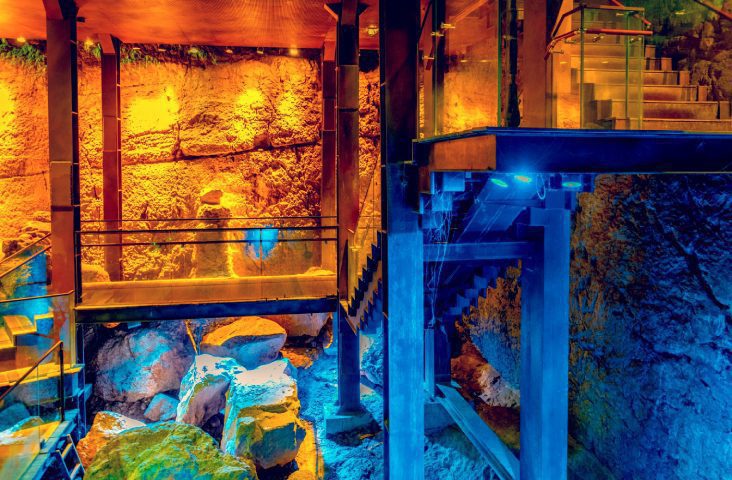
Macalister and Duncan excavations brought to light a fortification wall with towers; which they attributed to the Jebusites because the biblical account describes Jerusalem as so strongly fortified that the Israelites were unable to take it until the time of David.
Archaeology of Biblical Jerusalem: Excavations Under Kathleen M. Kenyon
In the 1960s this area was re-excavated by the British archaeologist Kathleen M. Kenyon, who dug on the slope below the fortification wall uncovered by Macalister and Duncan. Kenyon demonstrated that the fortification wall and towers date no to the time of the Jebusites (Bronze Age). But to the Second Temple period (after 586 BCE).
Furthermore, Kenyon’s excavations revealed the fortification wall site atop a massive stepped stone structure (glacis). Which she assumed was intended to buttress the fortification wall. So Kenyon, therefore, dated the glacis to the Second Temple period as well.
In the 1970s, this area was re-excavated by the Israeli archaeologist Yigal Shiloh (Area G in his excavations). Then Shiloh uncovered more of the glacis, revealing that Israelite houses of the eighth century and seventh-century BCE. (or perhaps earlier) had been built on top of the lower part of the glacis. As a result, Shiloh’s discovery provides an eighth-century terminus ante quem for the glacis, meaning the glacis must have been built before the eighth century.
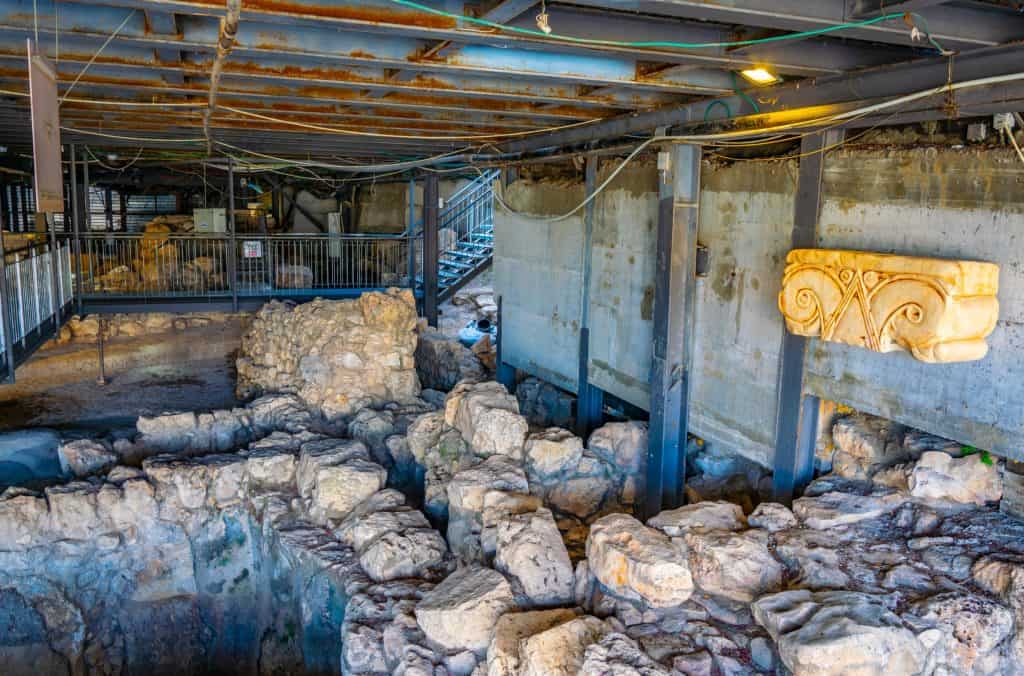
Archaeology of Biblical Jerusalem: King David’s Palace
Recent excavations by the Israeli archaeologist Eilat Mazar in the area above the glacis have brought to light the remains of a large stone building that she identifies as the palace of King David. If Mazzar is correct, her discovery would support the traditional understanding of the biblical account by demonstrating that monumental architecture existed in Davidic Jerusalem. Suggesting that David was more than merely a tribal leader of a minor chiefdom.
Mazar’s discovery has generated controversy. Not only because of its implications. But also because some scholars point to a lack of secure evidence for dating the structure to the time of David (ca. 1000 BCE). Moreover, Prof. Israel Finkelstein from Tel Aviv University argues that the Iron Age pottery type that Eilat Mazar found in her excavations; in fact has been dated too early by as much as 50 to 100 years.
Not only in Jerusalem but elsewhere around the country. For this reason, Finkelstein and others claim that buildings and other remains at sites around the country that have been attributed to David and Solomon; instead should be dated to the ninth century.
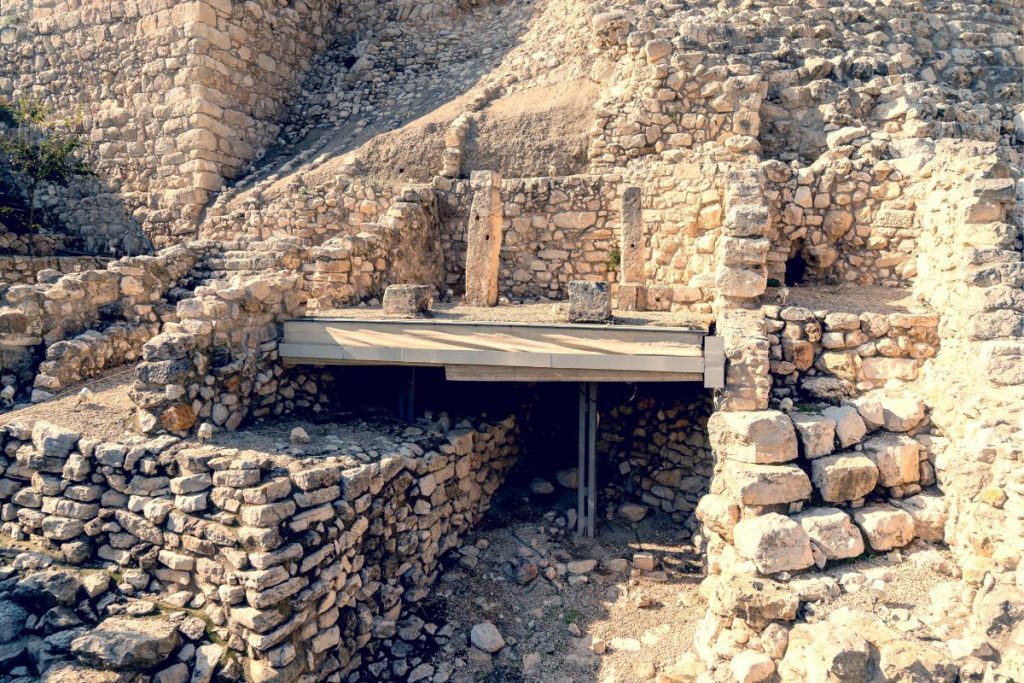
Archaeology of Biblical Jerusalem: A Four-Room House
The houses that Shilo unearthed dated to the 8th and 7th century BCE, on top of the glacis, represent a typical Israelite called a four-room house. This type is so-called because the ground floor plan typically is divided into three long spaces; with a short space running along the width at the back. Perhaps this could be the house that Bathsheba bathed in her courtyard while he was on the roof of his palace.
Another four-room house excavated by Shilo was the “house of the bullae”. So-called because it yielded a cache of 51 bullae (singular: Bulla); which are small clay lumps used to seal documents and containers. Bullae are rare finds because unfired clay turns back into the mud. The bullae found by Shiloh have been preserved thanks to the Babylonian destruction in 586 BCE., which burned the archive of documents originally stored in this house but fired the clay sealings.
Gemaryahu, Son of Shaphan
At least one Bulla found by Shilo bears the name of an Individual mentioned in the Bible and could be the actual person. The name is “Gemaryahu, son of Shaphan”. Even though in biblical times, names were used repeatedly
over and over again. For example, Joseph, the son of Isaac. And then, when Joseph had a son, he called him Isaac, and you get the drift. So the fact a name was found inscribed on those Bullae does not mean that it could be the same actual individual in the Bible.
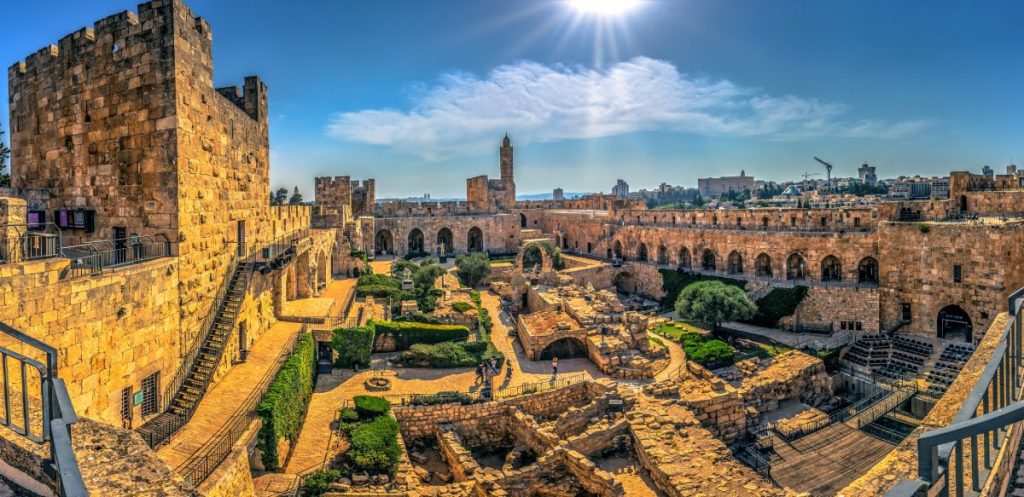
But in this case, the name Gemaryahu the son of Shaphan is a very unusual name. And in Jeremiah 36:10 it is actually told that he was a scribe in the court of Jehoiakim the king of Judah (the son Josiah). Also, we know that he reigned from ca. 609 to 598. Now a scribe is just the sort of person we would expect to seal documents. And the timing corresponds well with the archaeological evidence. Because the “house of the Bullae” was destroyed in 586 BCE.
Archaeology of Biblical Jerusalem: Herod’s Palace and the Three Towers
When Jerusalem fell to Herod the Great in 37 BCE., the walled settlement consisted of Temple Mt (with the Second Temple), the City of David, and the Western Hill. Josephus Flavius, the Roman historian that lived in the time of the Second Temple; and even participated in the First Jewish Revolt, describes Herod’s Palace as consisting of two wings separated by pools and gardens. Again according to Josephus, Herod named the wings the Caesareum in honor of Augustus; and the Agrippaeum in honor of Marcus Agrippa, Augustus’ son-in-law and designated heir. In fact, he died in 12 BCE., predeceasing Augustus).
Herod formed a close relationship with Marcus Agrippa, who visited Judea and toured Herod’s kingdom in 15 BCE. Although excavations have been conducted where Herod’s palace was located (the modern Armenian Garden), almost no superstructure remains have survived.
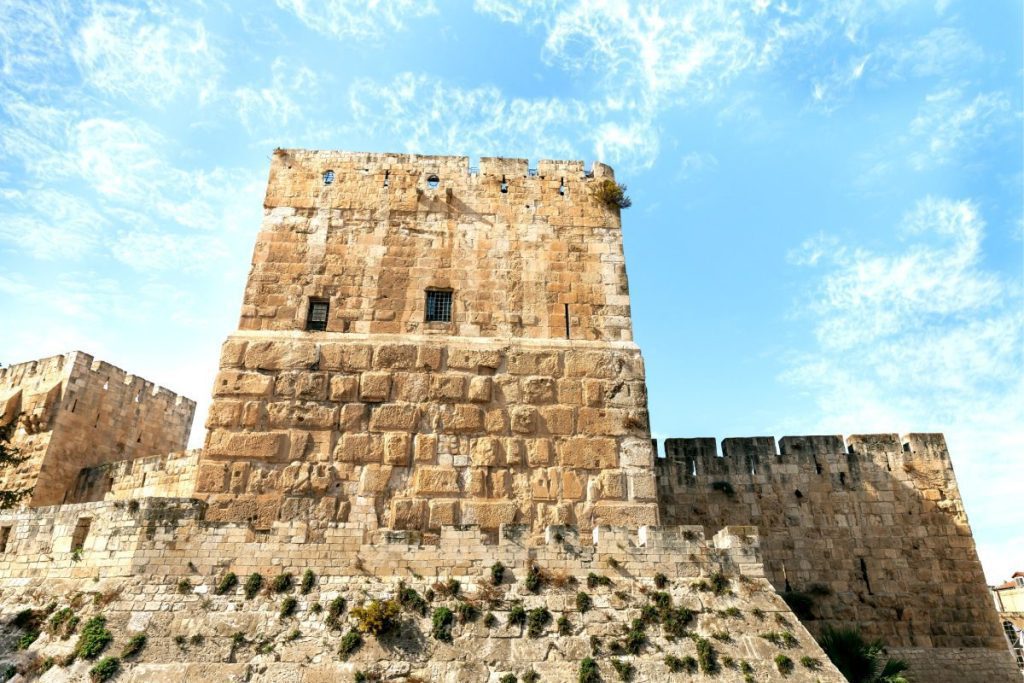
Archaeology of Biblical Jerusalem: David’s Tower
Near Herod’s palace, just next to the present-day Jaffa Gate, Herod erected three large towers. These towers served two purposes: First, to reinforce the city’s vulnerable northern flank, which is not bounded by a deep natural valley as the other sides were. Second, to protect Herod’s palace, which was surrounded by its own fortification system.
Josephus mentions that Herod names the towers: the largest tower Phasael (in honor of his older brother who committed suicide in 40 BCE.), the middle-sized tower Hippicus (after his friend). Lastly, the smallest tower he called Mariamne (in honor of his beloved Hasmonean wife, whom he executed). When Jerusalem fell to the Romans in 70 C.E, Titus had two of the towers razed to the ground but left one standing.
Today only the lower part of the tower survived. It lies inside a large fortified enclosure (the citadel). Most of the remains in the Citadel are much more recent than the Roman period, dating to medieval and Ottoman times. However, some earlier remains are enclosed within the Citadel; including the northwest corner of the first wall. Into which the Herodian tower is set. The tower is constructed of characteristic Herodian-style masonry. In other words, large ashlar stones with smooth drafted margins and a flat, paneled boss. Because of the large size. many scholars identify the tower as Phasael. However, an Israeli archaeologist, Hillel Geva, has suggested that it is Hipicus; based on Josephus’ descriptions of the location of the tower relative to the line of the First Wall.
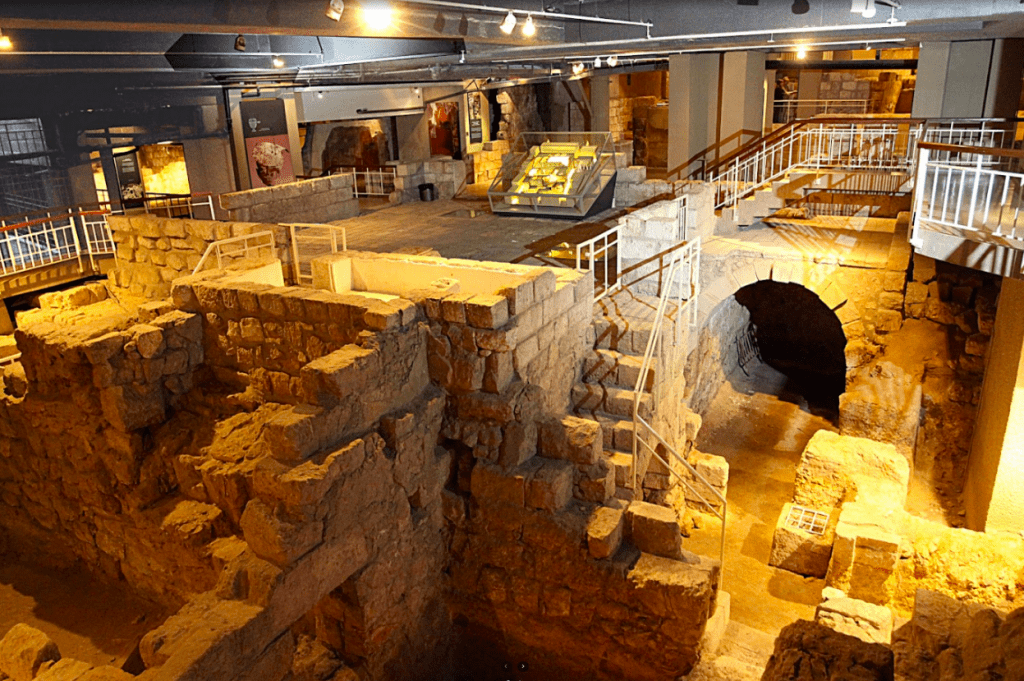
Archaeology of Biblical Jerusalem: The Western Hill
These Days the western hill is the area where the Jewish Quarter and Armenian Quarter are located. Back then in the Second Temple period, it was Jerusalem’s upper-class residence. This is where the Hasmonean and Herodian palaces were located. And where Jerusalem’s wealthiest Jews lived.
Excavations Under Prof. Nahman Avigad
In 1969, Avigad was invited to undertake the excavation of the Jewish Quarter in the Old City of Jerusalem, devastated by the 1948 war and its aftermath. Among the finds were what was believed to be the earliest depiction of the menorah that once burned in the Second Temple; cut into a wall plastered 2,200 years ago. And the Burnt House, the remnant of a building destroyed when Titus, the future Roman Emperor; repressed the Great Jewish Revolt against Roman rule. This was the first physical or archaeological evidence for the destruction described in the work of Flavius Josephus.
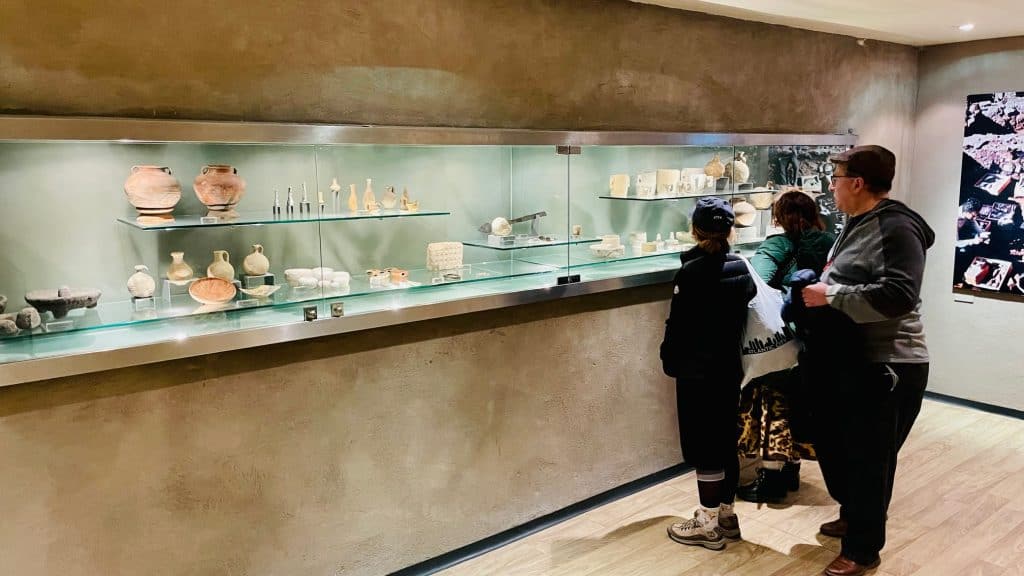
Archaeology of Biblical Jerusalem: The Herodian Mansions
The digs also unearthed lavish villas belonging to the Herodian upper classes. Avigad’s excavation in the Jewish Quarter in the 1970s brought to light densely packed urban villas belonging to the Jerusalem elite. The largest villa, which Avigad dubbed “the mansion”, covers an area of some 600 square meters. Each villa consisted of two or even three stories of rooms (including a basement for storage) surrounding a central courtyard.
Like I described in my post describing Herod’s Palace, in the ancient Mediterranean and Near East, houses focused on a central courtyard. What is Roman Architecture is called Domus Italica? And the courtyard was surrounded by rooms. This arrangement provided privacy for the house’s residents; together with windows and doorways in the walls facing the courtyard providing light and air to the surrounding rooms.
The urban villas discovered by Avigad were decorated in Roman fashion. For example mosaic floors, wall paintings (frescos) in the Second Pompeian Style (a style popular in Italy in the first-century CE.); and stucco (plaster molded-in imitation of marble panels and other architectural shapes). Some rooms were repainted and remolded more than once. In other words to keep up with the changing styles of interior decoration. The villas were also furnished elaborately with expensive Roman-style stone tables (carved of local Jerusalem chalk) and sets of imported Terra Sigillata pottery dishes.
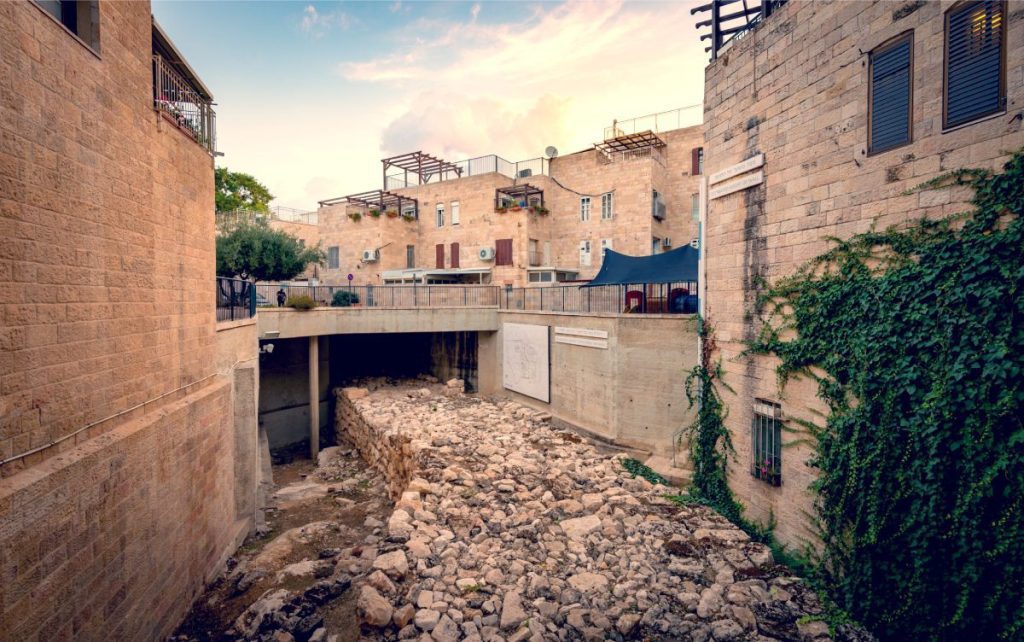
A Unique Glass Vase
One family owned a beautiful mold-made glass vase that was signed by Ennion, a famous Phoenician master craftsman. The discovery of the vase in the Jewish Quarter excavations provides a context for dating Ennion’s products to the first century CE. The size and lavish decorations of these urban villas indicate that the residents were members of the Jerusalem elite. Clearly, these wealthy Jews were Romanized – that is, they had adopted many aspects of the Roman lifestyle.
Romanized But Still Jews
At the same time, there is evidence that they also observed Jewish law. For example, the interior decoration is Roman in style but lacks figured images that characterize Roman art: deities, animals, or humans. Instead, these Jews wealthy Jews apparently understood the Second Commandment; which prohibits the making of images. As for meaning that it is forbidden to portray any figured images in art.
Furthermore, each villa was equipped with one or more Miqva’ot (Jewish ritual baths) and yielded large numbers of stone (chalk) dining dishes and other vessels, attesting to the observance of Jewish Purity Laws. Many Jews of the Second Temple period believed that stone cannot contract ritual impurity. On the basis of their interpretation of a biblical passage. In contrast, if a pottery vessel comes into contact with something that is ritually impure, it cannot be purified and must be smashed.
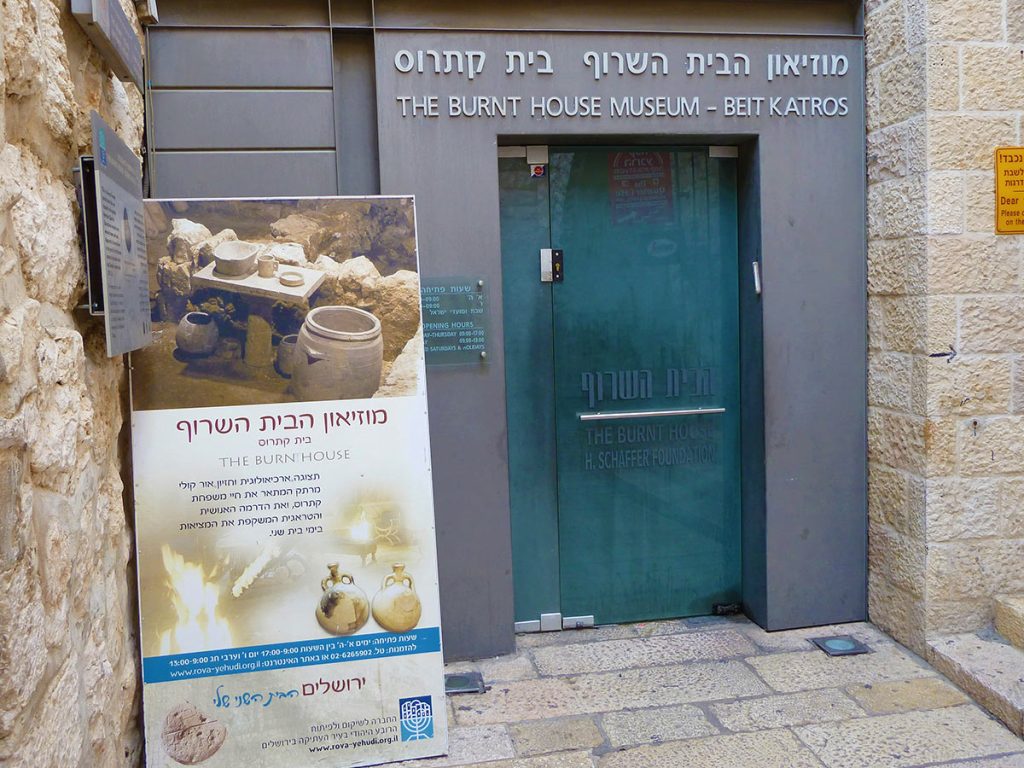
Archaeology of Biblical Jerusalem: The Burnt House
The archaeological evidence for purity observance suggests that some of the wealthy residents of the Jewish Quarter villas were priests, which is not surprising. As we know that priestly families were members of the Jerusalem elite. Avigad found additional evidence of the priestly presence in a villa that he dubbed “The Burnt House“. This villa is so-called because the basement rooms (the only part of the house that survived) were covered with layers of ashy soot; from the destruction of the house by the Romans in 70 CE. A stone weight found in one of the rooms is inscribed with the name of a known priestly family – Bar Kathros – presumably the villa’s owner.
More Discoveries in the Jewish Quarter
Also remains of the Byzantine Nea (new) Church and Jerusalem’s Cardo, a fifth-century 70-foot (21 m)-the wide road connecting the Church of the Holy Sepulcher and Nea Church. Among the most exciting finds was the remnants of the Broad Wall twice mentioned in the Book of Nehemiah. Built to defend Jerusalem during the reign of King Hezekiah in the late 8th century BCE, there remains an 80-foot (24 m) stretch of wall, 23 feet (7.0 m) thick, rising from bedrock west of the Temple Mount. Nearby, Avigad also unearthed the Israelite Tower, a remnant of Jerusalem’s Iron Age fortifications attesting to the Babylonian sack of Jerusalem in 586 BCE.
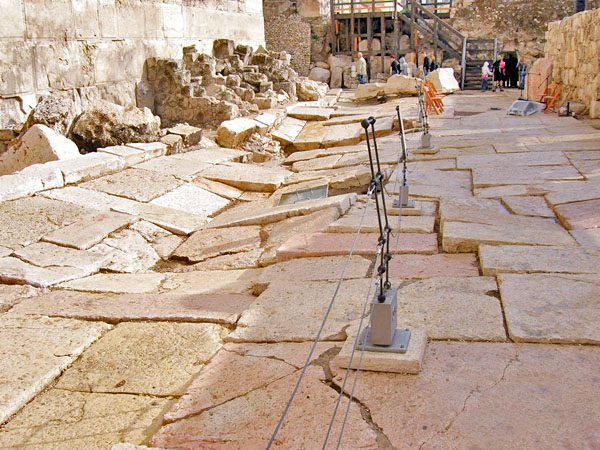
The Temple Mount
The centerpiece of Herod’s building program in Jerusalem was the reconstruction of the Second Temple, which had been consecrated in 516 BCE., Although no remains of the temple survive, today’s Temple Mount is a product of Herod’s building program. In our private tour, we will see a number of important gates that provided access to the Temple. The Hulda Gates are two gates, each originally with double doors, in the south wall of the Temple Mount. They provided the main access for pilgrims to the Temple Mount, who would purify themselves first in the large Jewish ritual baths outside the gates. Or in the Pool of Siloam to the south.
The Temple Warning Inscription
The only surviving remains associated with the temple itself consist of two Greek inscriptions that originally were set into a low stone fence that surrounded the temple’s fortifications. Greek and Latin inscriptions in the fence prohibited non-Jews (Gentiles) from entering the temple in pain of death. The two surviving Greek inscriptions were discovered infills to the south of Temple Mt. The more complete inscription is in the Istanbul Archaeological Museum in Turkey. It was discovered in 1871 by Charles Simon Clermont-Garneau and published by the Palestine Exploration Fund. And A partial fragment of the inscription was found in 1936 by J. H. Iliffe in Jerusalem’s Lions’ Gate and is held in the Israel Museum.
The inscription says:
“No stranger is to enter
within the balustrade round
the temple and
enclosure. Whoever is caught
will be himself responsible
for his ensuing
death.”
